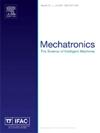双共轭阻抗匹配波能转换器的协同设计
IF 3.1
3区 计算机科学
Q2 AUTOMATION & CONTROL SYSTEMS
引用次数: 0
摘要
与其他振荡功率转换系统一样,波能转换器的设计可以理解为阻抗匹配问题。通过将波能转换器表示为一个多端口网络,可以建立两个独立但相关的阻抗匹配条件。满足这些条件可以最大限度地向负载传输功率。在实际应用中,这些阻抗匹配条件可能会影响系统的设计(包括船体、动力输出、控制器、系泊等)。为此,本文考虑了利用阻抗匹配框架设计波能转换器的一些应用实例。本文章由计算机程序翻译,如有差异,请以英文原文为准。
Co-design of a wave energy converter through bi-conjugate impedance matching
As with other oscillatory power conversion systems, the design of wave energy converters can be understood as an impedance matching problem. By representing the wave energy converter as a multi-port network, two separate but related impedance matching conditions can be established. Satisfying these conditions maximizes power transfer to the load. In practice, these impedance matching conditions may be used to influence the design of the system (including the hull, power take-off, controller, mooring, etc.). To this end, this paper considers some example applications of wave energy converter design with the help of the impedance matching framework.
求助全文
通过发布文献求助,成功后即可免费获取论文全文。
去求助
来源期刊

Mechatronics
工程技术-工程:电子与电气
CiteScore
5.90
自引率
9.10%
发文量
0
审稿时长
109 days
期刊介绍:
Mechatronics is the synergistic combination of precision mechanical engineering, electronic control and systems thinking in the design of products and manufacturing processes. It relates to the design of systems, devices and products aimed at achieving an optimal balance between basic mechanical structure and its overall control. The purpose of this journal is to provide rapid publication of topical papers featuring practical developments in mechatronics. It will cover a wide range of application areas including consumer product design, instrumentation, manufacturing methods, computer integration and process and device control, and will attract a readership from across the industrial and academic research spectrum. Particular importance will be attached to aspects of innovation in mechatronics design philosophy which illustrate the benefits obtainable by an a priori integration of functionality with embedded microprocessor control. A major item will be the design of machines, devices and systems possessing a degree of computer based intelligence. The journal seeks to publish research progress in this field with an emphasis on the applied rather than the theoretical. It will also serve the dual role of bringing greater recognition to this important area of engineering.
 求助内容:
求助内容: 应助结果提醒方式:
应助结果提醒方式:


